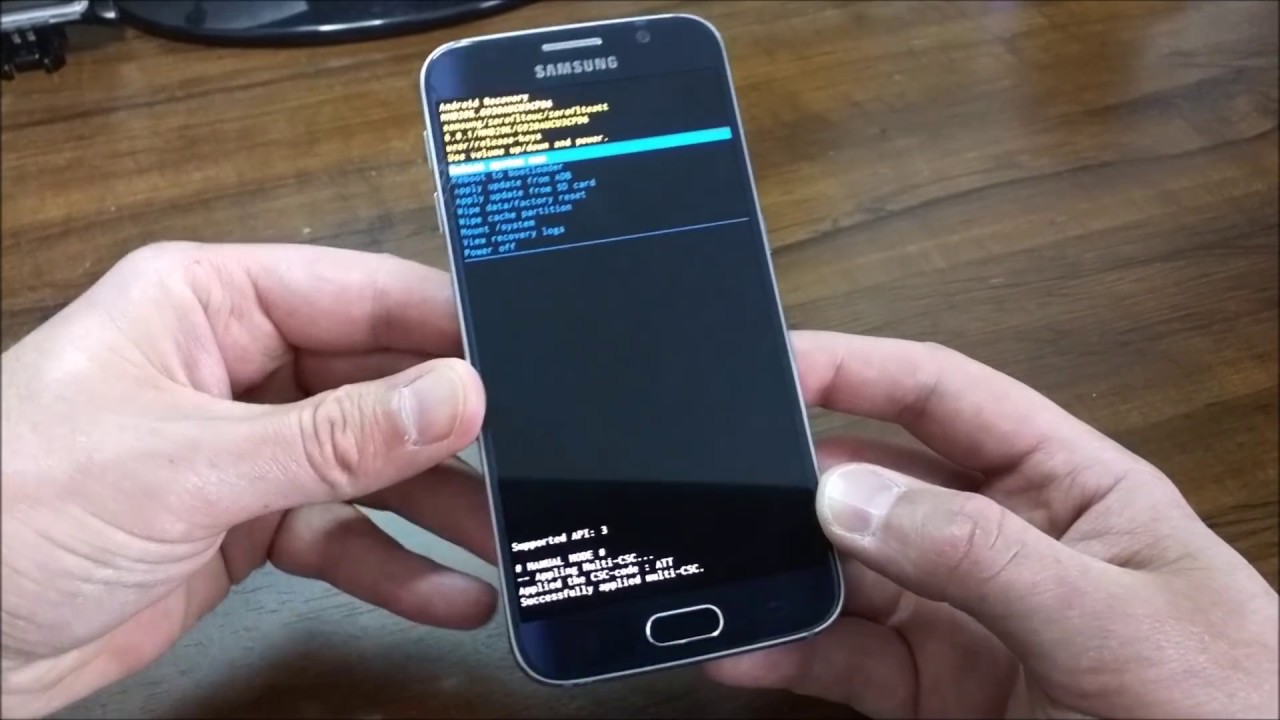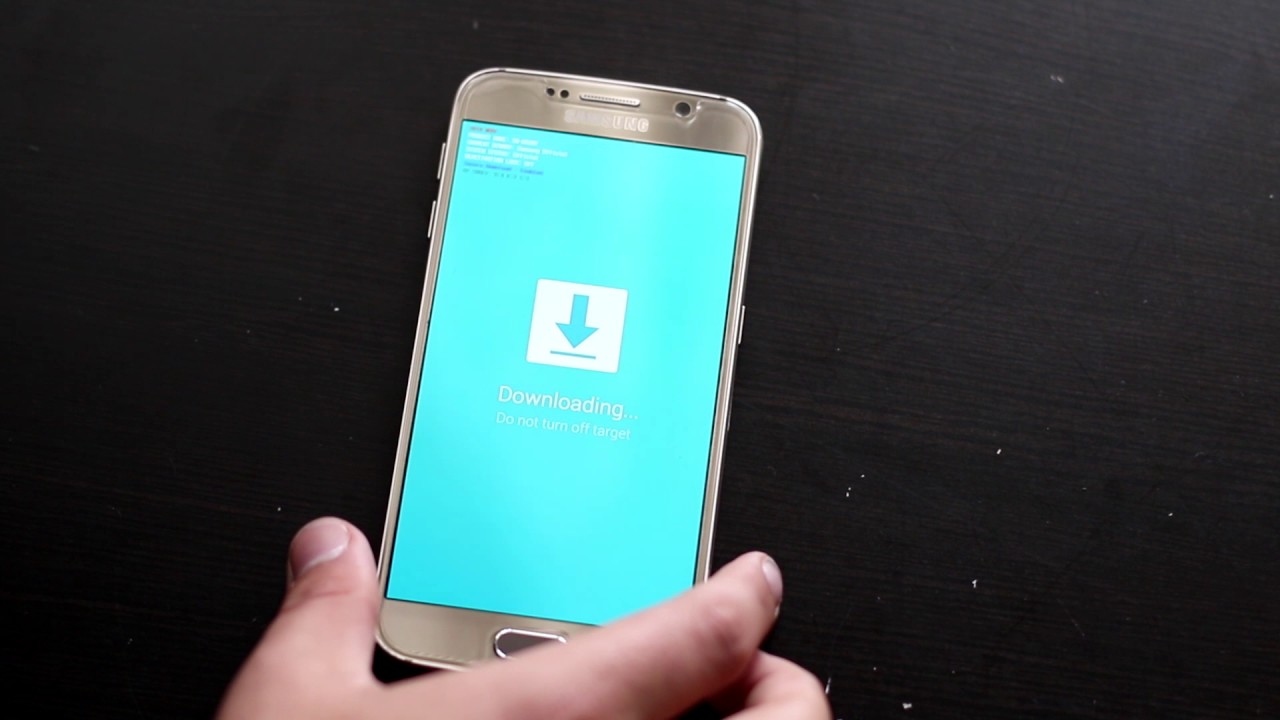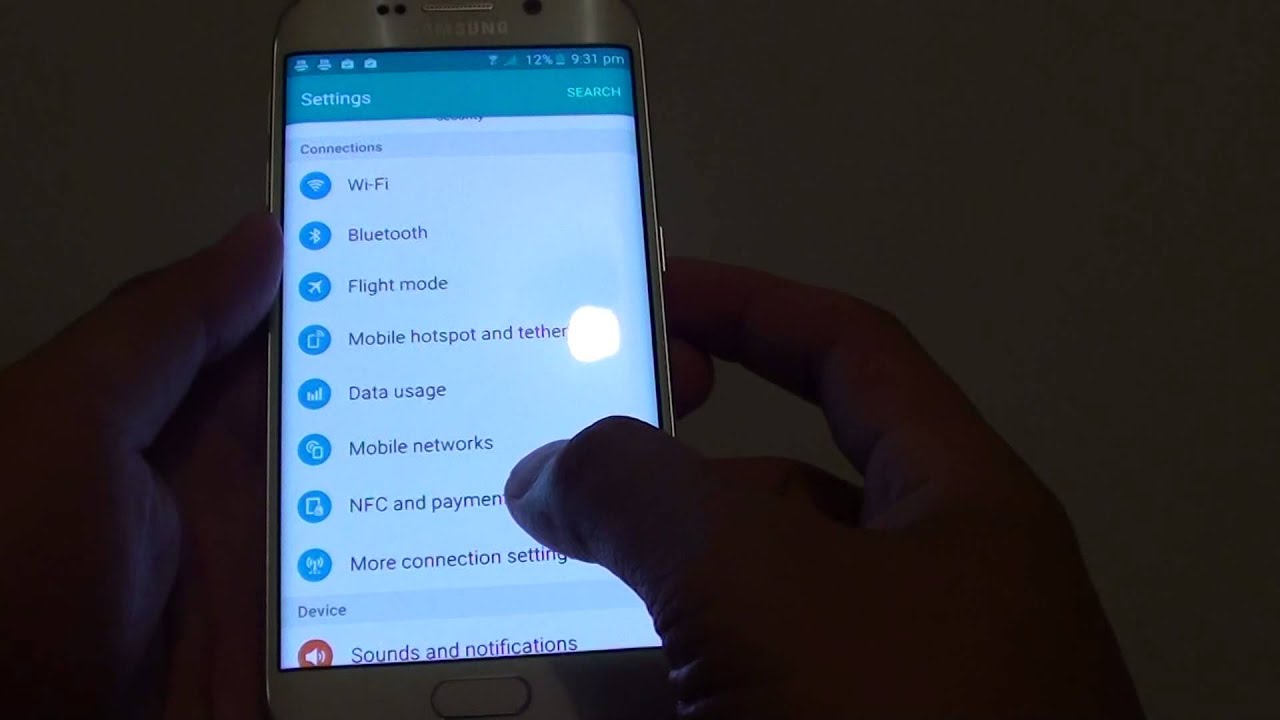Introduction
In today’s fast-paced world, technology is constantly evolving, and smartphones have become an integral part of our lives. The Samsung Galaxy S6 is a popular choice among smartphone users, known for its sleek design, powerful performance, and user-friendly interface. One of the key advantages of owning a smartphone is the ability to receive and install software updates, which can include new features, bug fixes, and security patches. While most updates are automatically pushed to your device, there may be instances where you want to manually update your Samsung Galaxy S6.
Manually updating your device can provide several benefits. First, it allows you to have more control over the update process and timing. You don’t have to wait for the automatic update to be released or rely on your network carrier to push the update to your device. Instead, you can proactively check for updates and install them when it’s most convenient for you. Manual updates also give you the opportunity to stay up to date with the latest software enhancements and security fixes, ensuring optimal performance and protection for your device.
Manual updates are particularly useful if you’re experiencing issues with your device or if you want to take advantage of a specific feature or functionality that’s only available in the latest update. Additionally, by manually updating your Samsung Galaxy S6, you can avoid potential delays or conflicts that may arise from relying on the automatic update process.
Before diving into the manual update process, it’s important to understand some key considerations and prerequisites. This guide will walk you through the step-by-step process of manually updating your Samsung Galaxy S6, ensuring a smooth and successful update experience. So, let’s get started!
Why Manual Update?
Automatic updates are convenient and ensure that your device stays up to date with the latest software improvements. However, there are several reasons why you might opt for a manual update instead.
Firstly, manual updates give you more control over the update process. With automatic updates, your device will typically download and install the latest software without any input from you. This can be a hassle if you’re in the middle of an important task or if you prefer to schedule updates for a more convenient time. By manually updating your Samsung Galaxy S6, you can choose when to initiate the update and ensure that it doesn’t interrupt your workflow.
Secondly, manual updates allow you to bypass potential delays caused by your network carrier. When updates are released, they are often rolled out in batches to different regions and carriers. This means that some users may receive the update earlier than others. If you’re eager to try out new features, bug fixes, or security patches, you may prefer to manually update your device and avoid waiting for your carrier to push the update to your phone.
Another advantage of manual updates is that they offer more flexibility and customization options. With automatic updates, you have limited control over which updates are installed on your device. This can be problematic if an update introduces changes that you don’t want or if it causes compatibility issues with certain apps or features. By manually updating your Samsung Galaxy S6, you can review the update details and decide whether it’s worth installing based on your preferences and needs.
Additionally, manual updates are beneficial if you’re facing specific issues with your device. Sometimes, software updates address known bugs or performance issues. If you’re experiencing problems with your Samsung Galaxy S6, a manual update might resolve the issue by installing bug fixes or optimizations.
Overall, manual updates give you more control, flexibility, and customization options for your Samsung Galaxy S6. Whether you want to avoid potential delays, customize your update preferences, or address specific issues, manually updating your device allows you to ensure that it’s running the latest software tailored to your needs.
Before You Start
Before diving into the manual update process for your Samsung Galaxy S6, there are a few important things to consider and prepare. By following these steps, you’ll ensure a smooth and successful update experience:
- Backup your data: Before initiating any software update, it’s crucial to back up your device data. This includes your contacts, photos, videos, documents, and any other important files. While the update process should preserve your data, unexpected errors can occur, so it’s always best to have a backup as a precaution.
- Check your device’s battery level: Ensure that your Samsung Galaxy S6 has enough battery power to complete the update process. It’s recommended to have at least 50% or more battery charge to avoid any potential issues or interruptions during the update.
- Connect to a stable internet connection: Manual updates require a stable and reliable internet connection. Make sure you’re connected to a Wi-Fi network with a strong signal to prevent any interruptions or data limitations that could occur when using mobile data.
- Make sure your device is compatible: Ensure that your Samsung Galaxy S6 is eligible for the update you’re planning to install. Sometimes, updates are specific to certain models or regions, so it’s important to verify compatibility before proceeding.
- Check for available storage: Software updates often require a certain amount of available storage space on your device. Before starting the update process, check that you have enough free storage to accommodate the update package. If necessary, delete unnecessary files or applications to free up space.
- Update your apps: It’s a good idea to update your installed applications to their latest versions before initiating a device update. By doing so, you ensure optimal compatibility and performance between your apps and the new software.
- Read the update release notes: Take a few moments to review the release notes or update instructions provided by Samsung. These notes often contain important information about new features, bug fixes, and known issues. Familiarizing yourself with the update details will help you make an informed decision and set appropriate expectations.
By following these preliminary steps, you’ll be well prepared for the manual update process of your Samsung Galaxy S6. Let’s move on to the next section to check for available updates.
Step 1: Check for Updates
The first step in manually updating your Samsung Galaxy S6 is to check if there are any available updates for your device. To do this, follow these simple steps:
- Unlock your Samsung Galaxy S6 and go to the home screen.
- Swipe down from the top of the screen to access the notification panel.
- Tap on the gear icon in the top right corner to open the Settings app.
- Scroll down and tap on “Software update”.
- Tap on “Download updates manually”.
- Your device will now check for any available updates. If there are updates available, a message will appear indicating that updates are ready to be downloaded and installed.
- Tap on “Download” to start the update process.
- Wait for the download to complete. This may take some time depending on the size of the update and your internet connection speed.
- Once the download is complete, tap on “Install now” to begin the installation process.
- Wait for your device to install the update. It may restart multiple times during the installation process.
- After the update is installed, your Samsung Galaxy S6 will reboot and you’ll be running the latest software version.
Checking for updates periodically is important to ensure that your device is up to date with the latest features, bug fixes, and security patches. By following this step, you can proactively keep your Samsung Galaxy S6 running smoothly and efficiently.
Now that you’ve checked for updates, let’s move on to the next step and learn how to download the firmware for manual installation.
Step 2: Download the Firmware
Once you’ve checked for available updates on your Samsung Galaxy S6, it’s time to download the firmware that you’ll manually install. Follow these steps:
- Open a web browser on your computer.
- Visit the official Samsung website or trusted third-party websites that offer firmware downloads for your specific model of Samsung Galaxy S6. Ensure that the firmware you download is compatible with your device.
- Search for the firmware download section on the website.
- Enter the model number of your Samsung Galaxy S6 in the search bar or select your device model from the provided options.
- Choose the latest firmware version available for your device.
- Make sure to select the appropriate region or carrier-specific firmware if applicable.
- Click on the download button to start the firmware download. The firmware file will be downloaded to your computer in a compressed format.
- Extract the downloaded file using a file compression software like WinRAR or 7-Zip. This will result in a firmware file with a .tar or .tar.md5 extension.
- Ensure that the extracted firmware file is stored in a location on your computer that is easily accessible.
Downloading the correct firmware for your Samsung Galaxy S6 is crucial to ensure a successful update process. It’s essential to use trusted sources and double-check the compatibility with your device model and region. Now that you have the firmware file ready, let’s proceed to the next step and prepare your device for manual update.
Step 3: Prepare Your Device
Before proceeding with the manual update of your Samsung Galaxy S6, it’s important to prepare your device by following these steps:
- Ensure that your Samsung Galaxy S6 is fully charged or has a sufficient amount of battery power. This will prevent any interruptions or potential issues during the update process.
- Power off your device by pressing and holding the power button and selecting “Power off” from the menu that appears on the screen.
- Enable the “Developer options” on your Samsung Galaxy S6 by going to the device settings. To do this, navigate to “Settings” > “About phone” > “Software information” > “Build number”. Tap on the “Build number” multiple times until you see a message indicating that you are now a developer.
- Return to the main settings menu, and you should now see the “Developer options” listed. Tap on it to access the developer options menu.
- Scroll down and locate the “USB debugging” option. Toggle it on to enable USB debugging mode.
- Connect your Samsung Galaxy S6 to your computer using a USB cable.
- Once connected, a notification may appear on your device asking for permission to allow USB debugging. Tap on “Allow” or “OK” to grant permission.
Preparing your device before the manual update is essential to ensure a smooth and successful installation process. By fully charging your device and enabling USB debugging mode, you’re setting up the necessary conditions for a seamless update.
Now that your device is prepared, let’s move on to the next step and connect your Samsung Galaxy S6 to your computer for the update process.
Step 4: Connect Your Device to the Computer
To proceed with the manual update of your Samsung Galaxy S6, you need to establish a connection between your device and the computer. Follow these steps:
- Ensure that your computer is powered on and running smoothly.
- Take the USB cable that came with your Samsung Galaxy S6 and connect one end to the USB port on your computer.
- Take the other end of the USB cable and connect it to the charging port on your Samsung Galaxy S6.
- Once connected, your device should start charging, and a notification may appear on the screen indicating that your device is in charging mode.
- On your computer, wait for a moment to allow the necessary drivers to install if it’s the first time you’re connecting your device. The installation process may vary depending on your computer’s operating system.
- Ensure that your Samsung Galaxy S6 is properly connected to your computer by checking the notification bar on your device. It should display a “Connected as a media device” or similar message.
- If you’re prompted to choose the connection mode on your device, select “Transfer files” or “File transfer” mode.
- Your Samsung Galaxy S6 is now connected to your computer, allowing you to transfer files and proceed with the manual update process.
Establishing a stable and reliable connection between your Samsung Galaxy S6 and the computer is crucial for a successful manual update. By following these steps, you’ll ensure that your device is properly connected and ready for the next phase of the update process.
Now that your device is connected, it’s time to open the Odin software on your computer and add the firmware for installation. Let’s move on to the next step!
Step 5: Open Odin and Add Firmware
Odin is a widely used software for flashing firmware on Samsung devices. In this step, you’ll open Odin on your computer and add the firmware file for installation onto your Samsung Galaxy S6. Follow these instructions:
- On your computer, locate the Odin software that you downloaded earlier. It should be in the folder where you extracted the firmware file.
- Double-click on the Odin executable file to launch the program.
- Once Odin is open, you should see a blank area in the middle of the program with various buttons and options.
- In Odin, click on the “AP” or “PDA” button. This will open a file browser window.
- Navigate to the location where you extracted the firmware file on your computer and select the firmware file with the .tar or .tar.md5 extension.
- Click on “Open” to add the firmware file to Odin.
Once you’ve added the firmware file to Odin, you’re ready to proceed with the next steps to initiate the update process on your Samsung Galaxy S6. The firmware file contains the necessary software update package that will be installed onto your device, bringing it up to date with the latest version.
In the next step, you’ll start the update process using Odin. Stay tuned!
Step 6: Start the Update Process
Now that you have added the firmware file to Odin, it’s time to start the update process on your Samsung Galaxy S6. Follow these steps to initiate the update:
- Make sure that your Samsung Galaxy S6 is still connected to your computer via the USB cable.
- In Odin, ensure that the “Auto Reboot” and “F. Reset Time” options are checked. Leave all other options unchecked.
- Double-check that the firmware file is properly loaded in the “AP” or “PDA” field in Odin.
- Once everything is set up correctly, click on the “Start” button in Odin to begin the update process.
- Odin will now start flashing the firmware onto your Samsung Galaxy S6. The progress will be displayed in the message box at the bottom left corner of the program.
- Do not disconnect your device or interrupt the process. It may take a few minutes for the update to complete.
- Once the update is finished, Odin will display a “PASS!” message in the message box, indicating that the update was successful.
During the update process, your Samsung Galaxy S6 may restart multiple times. This is normal and part of the update installation. It’s important to remain patient and avoid disconnecting your device until Odin shows the “PASS!” message.
Now that you’ve started the update process, we’re almost done! The next step is to wait for the update to complete. Let’s move on to the next section.
Step 7: Wait for the Update to Complete
After initiating the update process on your Samsung Galaxy S6 using Odin, you will need to wait for the update to complete. Follow these instructions:
- As the update progresses, your Samsung Galaxy S6 will automatically restart multiple times. This is normal and part of the update installation process.
- During this stage, it’s crucial to be patient and avoid interrupting the update. Do not disconnect your device from the computer or close Odin until the update has completed.
- Odin will display the progress of the update in the message box at the bottom left corner of the program. The process may take several minutes, depending on the size of the update and your computer’s performance.
- Avoid using your Samsung Galaxy S6 or interacting with it during the update. Let the software installation proceed without any interruptions.
- Once the update is completed, Odin will display a “PASS!” message in the message box, indicating that the update was successful.
It’s important to remember that patience is key during this step. Avoid disconnecting your device, closing Odin, or interfering with the installation process. Interrupting the update can lead to errors or incomplete installation, which may cause issues with your Samsung Galaxy S6.
Once the update is completed and Odin shows the “PASS!” message, you’re almost done! The next step is to disconnect your device from the computer. Let’s move on to the final step.
Step 8: Disconnect Your Device
Now that the manual update has been successfully installed on your Samsung Galaxy S6, it’s time to disconnect your device from the computer. Follow these steps:
- Ensure that Odin displays a “PASS!” message in the message box, indicating that the update process is complete.
- Carefully remove the USB cable from both your Samsung Galaxy S6 and the computer.
- On your Samsung Galaxy S6, press and hold the power button until the device turns off.
- Wait for a few seconds, then press and hold the power button again to turn on your device.
- Your Samsung Galaxy S6 will now boot up with the updated software.
- Once your device has fully restarted, you can verify that the update was successful by going to the device settings and checking the software version.
Disconnecting your device marks the end of the manual update process. You can now start enjoying the benefits of the updated software on your Samsung Galaxy S6, such as new features, bug fixes, and performance improvements. Make sure to explore the various settings and options to fully utilize the updated software.
Congratulations! You have successfully completed the manual update process for your Samsung Galaxy S6. By following these steps, you have taken control of your device’s software updates and staying up to date with the latest enhancements. Remember to periodically check for new updates to keep your device running at its best.
Conclusion
Updating your Samsung Galaxy S6 manually can provide you with more control, flexibility, and customization options when it comes to keeping your device up to date. By following the step-by-step process outlined in this guide, you can ensure a smooth and successful manual update experience.
We discussed the advantages of manual updates, such as being able to choose the timing of the update, avoiding potential delays caused by network carriers, and having more customization options. We also covered important preparation steps, including backing up your data, checking your device’s battery level, and ensuring a stable internet connection.
Through each step, we detailed the process of checking for updates, downloading the firmware, preparing your device, connecting it to the computer, adding the firmware to Odin, starting the update process, waiting for the update to complete, and finally, disconnecting your device from the computer.
Remember, during the update process, it’s vital to be patient, avoid interrupting the installation process, and stay connected to your computer until Odin displays a “PASS!” message. This ensures that the update is successfully installed without any issues.
By manually updating your Samsung Galaxy S6, you can experience the latest features, bug fixes, and security patches, ensuring optimal performance and functionality for your device. Regularly checking for updates and keeping your device up to date is crucial to enjoy the latest improvements and enhancements.
We hope this guide has been helpful in guiding you through the manual update process for your Samsung Galaxy S6. Now, you can confidently take charge of keeping your device up to date and make the most out of its capabilities.

























